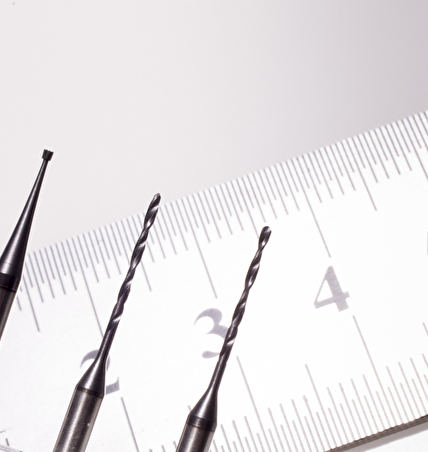The history of diamond-like carbon (DLC) starts in the early 1970s when the first report about diamond-like carbon was published. It has been used for industrial purposes to coat automotive components, such as high-pressure diesel injection systems and powertrain components. Today, the DLC coatings family is quite big and diversified with specific characteristics studied to meet customer expectations in various segments.
The coatings are usually classified by the ratio of sp3 to sp2 bonds and the hydrogen content. When carbon is sp3-bonded, it will form diamond; sp2 bonds will lead to graphite. With an increase in the ratio of sp3 to sp2 bonds, the hardness of the coating will typically increase.
ta-C DLC is a hydrogen-free carbon coating with a high sp3/sp2 ratio. Compared to other DLC coatings, ta-C films show higher hardness and temperature resistance. Once again, the first application of the coating was in the automotive industry: it was deposited on tappets (valve lifters), where it is still used today.
The reduction of friction coefficient is one of the purposes of the coating; this leads to decrease the energy consumption and lower CO2 emissions. ta-C coatings are used on tools to machine non-ferrous materials and on forming tools. In addition, they are used in other areas, such as eyeglasses, mechanical engineering, medical technology, or housings of cameras and smartphones. Moreover, DLC coatings are often used with functional/esthetical purposes for watch cases and components in the luxury watch sector.
When cutting non-ferrous materials, the tool wear mechanisms are different compared with cutting steel. One of the main challenges is to keep the cutting edge sharp and to reduce built-up edge; so, it’s important to keep the coating thickness as thin as possible. These factors contribute to the advantage of depositing ta-C coatings on cutting tools specifically for machining non-ferrous metals and plastics.
ta-C coatings contribute to reduce the adhesion of aluminum to the cutting edge. Given the high hardness of the coating, a coating thickness below 1μm (normally, it is between 0.3-0.8 μm) is typically sufficient on cutting tools such as drills, endmills, reamers, milling inserts. It has been performed tests also in the aerospace industry—drilling a titanium and CFRP sandwich material— and the results showed that ta-C coatings could extend tool life and significantly improve hole quality compared with a non ta-C coated tool. As ta-C has a maximum operating temperature of around 500° C, coolant applications are required in these cases.
ta-C coating thickness 0.5 µm
The deposition of hard ta-C coatings has traditionally been performed with cathodic arc evaporation technology. An arc discharge is generated on circular arc cathodes equipped with graphite targets. Due to the extremely high temperature in the arc spot and the electron current emitted from this spot, the evaporated carbon atoms are positively ionized. By applying a negative voltage on the products, the carbon ions bombard them. This process results in a ta-C coating with a hardness greater than 5000 HV.
The arc evaporation has, as negative effect, the generation of macroparticles, or droplets, and, therefore, a rough coating. For most milling and drilling applications, a rough surface does not hurt cutting performance; but in some applications the tool surface must be smooth to improve cutting performance. Post-treatment by special polishing technologies cannot always be performed for example on microtools or special shapes tools.
Microtools
For many years, the solution to reducing macroparticles has been filtered arc evaporation. A magnetic filter is used to steer the carbon ions toward the component, whereas the neutral carbon macroparticles are not steered and bombard the magnetic duct. The cathode is placed less than 90° from the chamber. The particles will move straight ahead and bombard the curved duct. A magnetic field is applied to steer the ions through the curve and reach the chamber. The disadvantages of this solution are a relatively slow deposition speed and small deposition area, as well as high equipment cost for a single purpose. Moreover, some macroparticles will deflect in the duct and still reach the substrates.
The filtered arc evaporation technology has been improved with the patented dropless® technology were an electric field, which is also called deceleration or deflection field, applied along the path of the macroparticles from the source to the substrate to be coated, repels or deviates the electrostatically charged macro particles. The result is a smooth and very hard surface (till 7000 HV) with superior adhesion and a dense coating film.
With the dropless® technology it is possible to deposit ta-C coatings on very small tools up to a diameter of 0.01 mm. This opens up a wide range of new technological possibilities for the coating of micro tools for machining other materials than non-ferrous ones.
Dr. Ing. Ghielmetti Claudio
Sales & Marketing Manager Argor-Aljba SA

